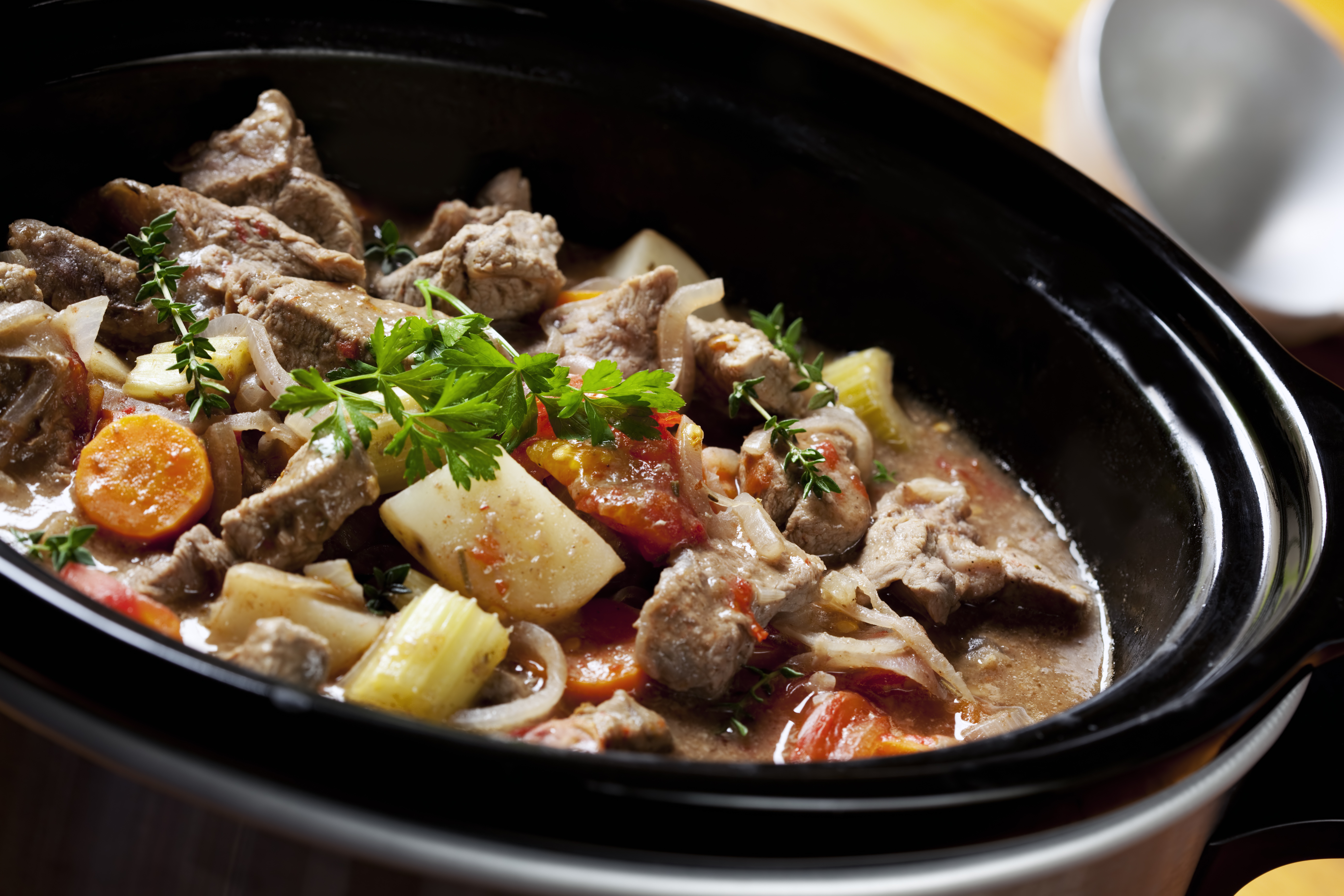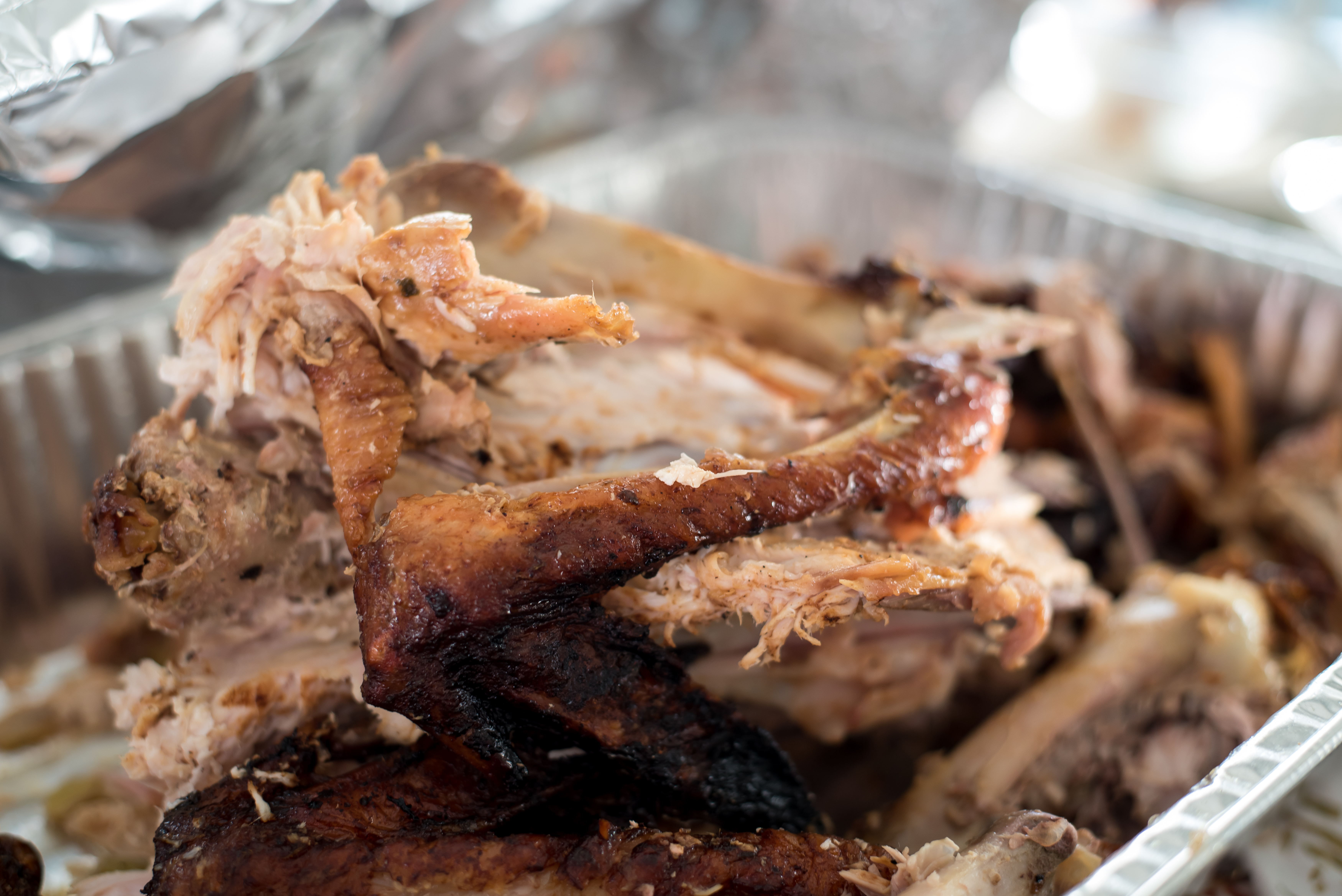
Campylobacter En Español
La bacteria “Campylobacter” es la segunda causa de enfermedades transmitidas por alimentos reportada con mayor frecuencia. Un enfoque completo sobre la seguridad alimentaria desde la granja hasta la mesa es necesario para reducir la campilobacteriosis. Los agricultores, la industria, e inspectores de alimentos, los vendedores de alimentos, los trabajadores en servicio de alimentos y los consumidores son eslabónes críticos en la cadena de la seguridad alimentaria. Este documento contesta preguntas comunes acerca de la bacteria “Campylobacter”, describe cómo el Food Safety and Inspection Service (FSIS) del Departamento de Agricultura de los Estados Unidos (USDA, por sus siglas en inglés) está atendiendo el problema de la contaminación de productos de carnes y aves con " “Campylobacter” y ofrece pautas para la manipulación segura de alimentos de alimentos para prevenir que bacterias, como “Campylobacter”, causen enfermedades.
P. ¿Qué es Campylobacter?
Campylobacter es una bacteria gramnegativa, microaerófila y es una de las causantes de enfermedades diarreicas, bacterianas, más común en los Estados Unidos. Campylobacter jejuni, es la cepa asociada con la mayoría de las infecciones humanas reportadas, puede estar presente en el cuerpo sin causar una enfermedad notable.
Los organismos Campylobacter se pueden encontrar en todas partes y se encuentran comúnmente en el tracto intestinal de gatos, perros, aves, ganado vacuno, cerdos, roedores, monos, aves silvestres y en algunos humanos. Las bacterias pasan por el del cuerpo a través de las heces y circulan por el medio ambiente. También, se encuentra en agua no tratada.
P: ¿Qué daños puede causar la bacteria Campylobacter?
La infección causada por la bacteria Campylobacter se llama campilobacteriosis y usualmente es causada consumiendo leche sin pasteurizar, carnes o aves crudas o no cocidas completamente, u otros alimentos y agua contaminados y por contacto con las heces de animales infectados. Aunque la bacteria puede estar presente en el tracto intestinal de personas y animales sin causar ningún síntoma o enfermedad, los estudios muestran que el consumir Campylobacter en una cantidad tan pequeña como 500 células pueden causar la enfermedad.
Los síntomas de infección con Campylobacter, los cuales ocurren usualmente entre 2 a 10 días después de ingerir la bacteria incluyen fiebre, dolor abdominal y diarrea (usualmente con sangre). En algunos casos, los médicos recetan antibióticos cuando la diarrea es severa. La enfermedad puede durar aproximadamente una semana.
Algunas complicaciones pueden incluir meningitis, infecciones de tracto urinario y posiblemente artritis reactiva (rara y casi siempre es de corta duración), y raramente el síndrome de Guillain-Barré, un tipo inusual de parálisis. Si bien la mayoría de las personas que contraen campilobacteriosis se recuperan completamente dentro de 2 a 5 días, algunas infecciones por Campylobacter pueden ser fatales, y provocan aproximadamente 124 muertes cada año.
P. ¿Hay más personas enfermando de campilobacteriosis?
La Red de Vigilancia Activa de Enfermedades Transmitidas por Alimentos (FoodNet) encontro una disminución de las tasas de infección por Campylobacter en 2009 (disminución del 30%), en comparación con los tres años anteriores de vigilancia (1996 a 1998). Aun así, según los Centros para el Control y la Prevención de Enfermedades (CDC), la campilobacteriosis causa una incidencia de alrededor de 20 casos por cada 100,000 habitantes diagnosticados anualmente en los Estados Unidos.
FoodNet es un proyecto de colaboración entre los CDC, los 10 sitios del Programa de Infecciones Emergentes (EPIs, por sus siglas en ingles), el USDA y la Administración de Alimentos y Medicamentos de los EE. UU. (FDA, por sus siglas en ingles). Uno de los objetivos de FoodNet es medir la eficacia de una variedad de medidas preventivas para reducir la incidencia de enfermedades transmitidas por alimentos atribuibles al consumo de carne, aves y otros alimentos.
P: ¿Quiénes son más susceptibles?
Cualquier persona puede enfermarse con Campylobacter. Sin embargo, los bebés y los niños pequeños, las mujeres embarazadas s y sus fetos y las personas de edad avanzada corren un mayor riesgo de contraer enfermedades transmitidas por alimentos al igual que las personas con sistemas inmunológicos debilitados (como aquéllos con VIH/SIDA, cáncer, diabetes, enfermedades renales y pacientes trasplantados).
P: ¿Cómo el Campylobacter se puede controlar?
Campylobacter se puede controlar en diferentes puntos de la cadena de producción y de comercialización de alimentos:
En la graja:
- Como es recomendado por el USDA, las buenas prácticas de saneamiento, en la granja disminuyen la oportunidad para que las bacterias se propaguen entre los animales y las aves.
- La pasteurización de la leche y el tratamiento de las fuentes de agua del municipio, eliminan otra vía de transmisión del Campylobacter y otras bacterias.
En la planta:
- Los alimentos crudos no son estériles y no existe ningún requerimiento de que éstos sean estériles. Las compañías procesadoras de alimentos son responsables de seguir prácticas de manufactura, apropiadas y vigentes, para disminuir las oportunidades para la propagación del Campylobacter y otras bacterias.
En la tienda:
- Un retiro de alimentos es un acto voluntario por parte del fabricante o distribuidor para proteger al público de productos que podrían causar problemas de salud o posiblemente la muerte. El FSIS lleva a cabo un número suficiente de verificaciones de efectividad para verificar que la empresa que está retirando el producto se haya comunicado con el distribuidor o vendedor.
Individuos:
- Reportando el problema es otra manera de controlar estas bacterias y prevenir que otros estén expuestos a la fuente de contaminación. Cualquier persona que experimente de síntomas de campilobacteriosis debe comunicarse con un médico. Los médicos que diagnostican campilobacteriosis y los laboratorios clínicos que identifique este organismo, deben reportar los resultados con su departamento de salud local.
P: ¿Qué está haciendo el FSIS para prevenir las infecciones con Campylobacter?
En su compromiso por asegurar que el público tenga un suministro de alimentos seguro y libre de enfermedades, el FSIS trabaja constantemente para mejorar el nivel de inocuidad y reducir los contaminantes en el suministro de carnes y aves.
En el 1998, el FSIS comenzó a imponer una combinación de control de procesos basado en Análisis de Peligros y Puntos Críticos de Control (HACCP, por sus siglas en inglés), pruebas microbianas, estándares de desempeño de reducción de patógenos y procedimientos operacionales de estándares de saneamiento que reducen significativamente la contaminación de carnes y aves con bacterias dañinas y reducen el riesgo de enfermedades transmitidas por los alimentos. Los establecimientos pueden optar por incluir Campylobacter en sus análisis de HACCP. Si el establecimiento identifica que Campylobacter tiene una probabilidad razonable de ocurrir o si se vuelve evidente que es un problema emergente en su proceso, el FSIS espera que el establecimiento diseñe y tenga controles para abordar este peligro microbiano para la inocuidad de los alimentos.
El HACCP clarifica las responsabilidades de la industria y del FSIS en la producción de productos seguros de carnes y aves. La función del FSIS es establecer estándares apropiados de seguridad alimentaria y de mantener una inspección fuertemente supervisada para asegurar que dichos estándares se cumplan.
El USDA está apoyando investigaciones para aprender más sobre el Campylobacter en los alimentos y cómo controlarlo.
Finalmente, el FSIS mantiene amplios programas educativos sobre el manejo adecuado de los alimentos para ayudar a las personas a prevenir y a reducir los riesgos de enfermedades transmitidas por los mismos.
P: ¿Cuál es la mejor manera de prevenir las infecciones con Campylobacter?
Las carnes y aves pueden contener Campylobacter. Sin embargo, la bacteria se puede encontrar en casi todas las aves crudas porque vive en el tracto intestinal de las aves sanas. Mejorar las prácticas de manejo adecuado de los alimentos en la cocina, reducirá la cantidad de enfermedades por Campylobacter. Las bacterias Campylobacter son extremadamente frágiles y se pueden destruyen fácilmente al cocinarlas a una temperatura interna mínima segura. También se destruyen por medio de los sistemas típicos para tratamiento de agua. No se puede confiar en la congelación para destruir las bacterias. Los congeladores domésticos generalmente no están lo suficientemente fríos como para destruir las bacterias.
Para destruir la bacteria Campylobacter y disminuir los riesgos de enfermedades transmitidas por los alimentos:
LIMPIAR: LÁVESE LAS MANOS Y LAVE LAS SUPERFICIES FRECUENTEMENTE
- Lávese las manos con agua y jabón por 20 segundos antes y después de manejar los alimentos y después de usar el baño, cambiar pañales y tocar mascotas.
- Lave los utensilios, tablas de cortar, platos y mostradores con agua caliente y jabón después de preparar cada alimento y antes de preparar el siguiente alimento.
- Considere usar toallas de papel para limpiar las superficies de la cocina. Si usa toallas de tela, lávelas con frecuencia en el ciclo caliente de su lavadora.
SEPARAR: NO PROPAGUE LA CONTAMINACIÓN
- Separe las carnes, aves y pescados crudos de otros alimentos en su carrito de compras y en su refrigerador.
- Si es posible, utilice una tabla de cortar para frutas y verduras frescas y otra separada para carnes, aves y pescados crudos.
- Lave siempre las tablas de cortar, platos, mostradores y utensilios con agua caliente y jabón, después que éstos tengan contacto con carnes, aves y pescados crudos.
- Nunca ponga alimentos cocidos en el mismo plato que fue utilizado para carnes, aves y pescados crudos.
COCINAR: CUEZA HASTA UNA TEMPERATURA ADECUADA
Utilice un termómetro para alimentos limpio cuando mida la temperatura interna de carnes, aves, guisos y otros alimentos para asegurarse de que hayan alcanzado una una temperatura interna mínima segura:
- Cocine todos los asados, filetes y chuletas, de carne cruda de res, cerdo, cordero y ternero, a una temperatura interna mínima de 145 grados F (62.8 grados C), medida con un termómetro para alimentos antes de remover la carne de la fuente de calor. Por seguridad y calidad, deje reposar la carne al menos tres minutos, antes de cortar y consumir la carne. Por razones de preferencia personal, los consumidores pueden escoger cocinar la carne a temperaturas más altas.
- Cocine toda la carne molida de res, cerdo, ternera y cordero, hasta 160 grados F (71.1 grados C) medida con un termómetro para alimentos.
- Cocine todas las aves a una temperatura interna mínima segura de 165 grados F (73.9 grados C), medida con un termómetro para alimentos.
- Para una seguridad óptima, cocine el relleno por separado a 165 grados F (73.9 grados C).
- Platillos que contengan huevos y guisos a 160 grados F (71.1 grados C).
- El pescado debe alcanzar una temperatura de 145 grados F (62.8 grados C), medida con un termómetro para alimentos.
- Deje hervir las salsas, sopas y salsas gravy cuando los recaliente.
- Recaliente las sobras completamente a al menos 165 grados F (73.9 grados C).
Además, no coma ni beba alimentos que contengan leche cruda no pasteurizada.
ENFRIAR: REFRIGERE PRONTAMENTE
- En la casa, mantenga los alimentos seguros, refrigérelos rápida y apropiadamente. Refrigere o congele los alimentos perecederos, los alimentos preparados y sobrantes de alimentos dentro de 2 horas [1 hora si la temperatura está sobre los 90 grados F (32.2 grados C)].
- Los congeladores deben registrar una temperatura de 0 grados F (-17.8 grados C) o menos y los refrigeradores, 40 grados F (4.4 grados C) o menos.
- Descongele los alimentos en el refrigerador, sumergidos en agua fría o en el horno de microondas. Los alimentos no se deben descongelar a temperatura ambiente. Los alimentos que se descongelen en el horno de microondas o sumergidos en agua fría deben cocinarse después de descongelarse.
- Marine los alimentos en el refrigerador.
- Divida las grandes cantidades de sobras de alimentos en recipientes poco profundos para que se enfríen rápidamente en el refrigerador.
- No llene demasiado el refrigerador. El aire frío debe circular para mantener los alimentos seguros.
Para más información sobre la bacteria Campylobacter, visite la página electrónica de los Centros de Control y Prevención de Enfermedades (CDC, por sus siglas en inglés) al: https://www.cdc.gov/campylobacter/about/index.html (solo disponible en inglés)



